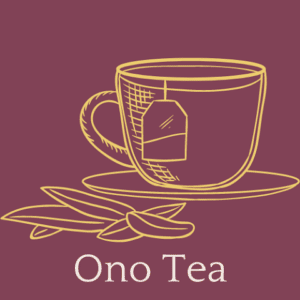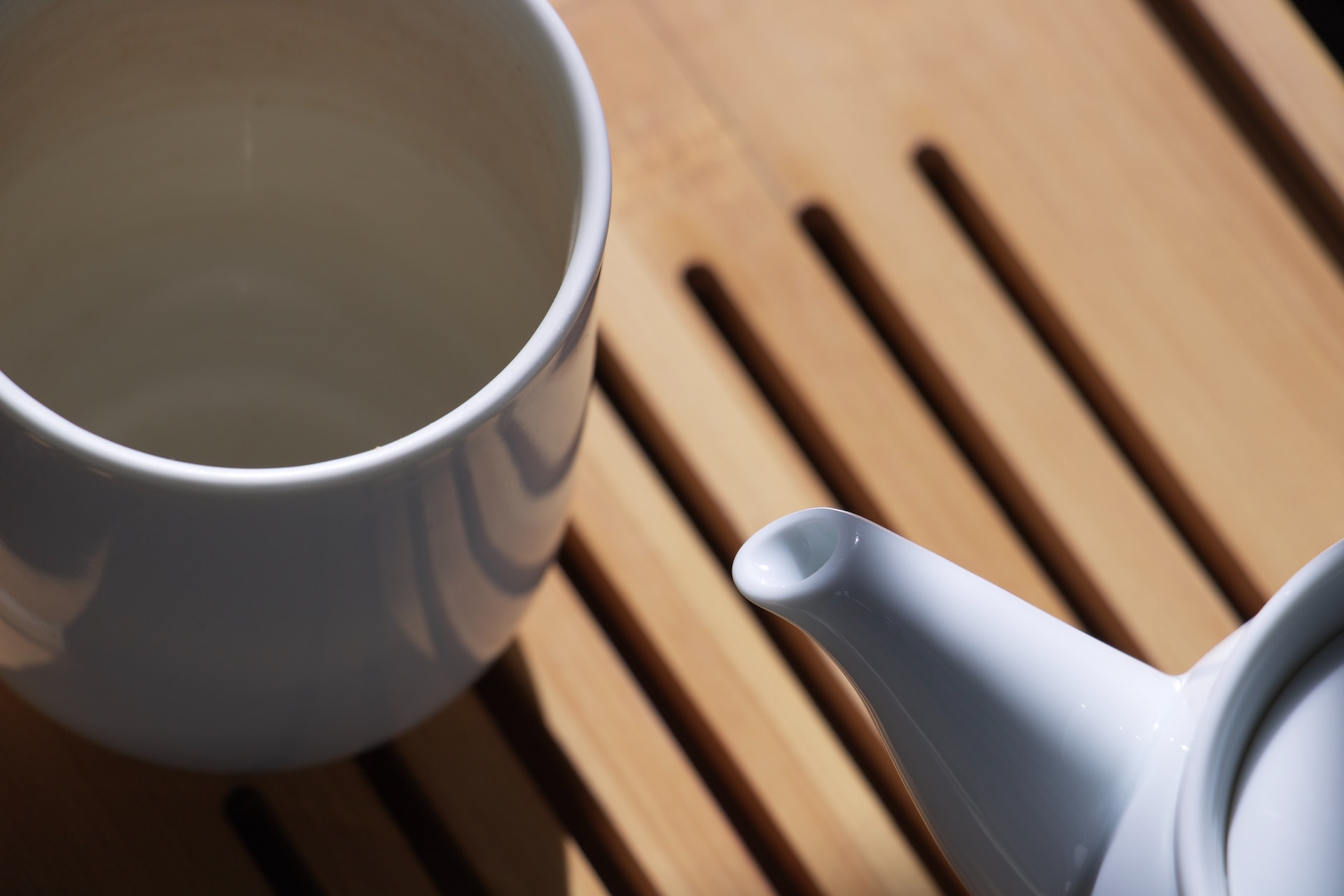Have you ever thought about whether your top-pick oolong tea is acidic, like lemon juice? If you’re a tea fan, you obviously love the cool, yummy taste of oolong tea, right? This tea comes from a plant called Camellia sinensis, and guess what? It’s not as strong as black tea but has a bolder taste than green tea.
You might have heard some people go on about “acidity” and “pH levels.” Don’t worry; I’ll dissect it for you. They’re just talking about whether something is more like a lemon (acidic) or more like soap (basic). And here’s the good news: oolong tea is just a tiny bit acidic, but not as much as black tea. So, you can still chug your favorite oolong tea without worrying about it being too sour!
Now, when we compare oolong tea to other teas like black, green, and herbal, it’s a bit more acidic but still safe for almost everyone to drink. Let’s find out more.
Why Does the Acidity In Your Tea Matter?
So why does this topic even matter? When your beverage is acidic, it affects your body as it may dial up the acidity in your stomach. Caustic gastric issues cause heartburn, and if it meanders its way to your esophagus, you now have heartburn.
Now before you tailspin, remember that acidity is not bad, but if you are sensitive or something is too acidic, then it’s not good.
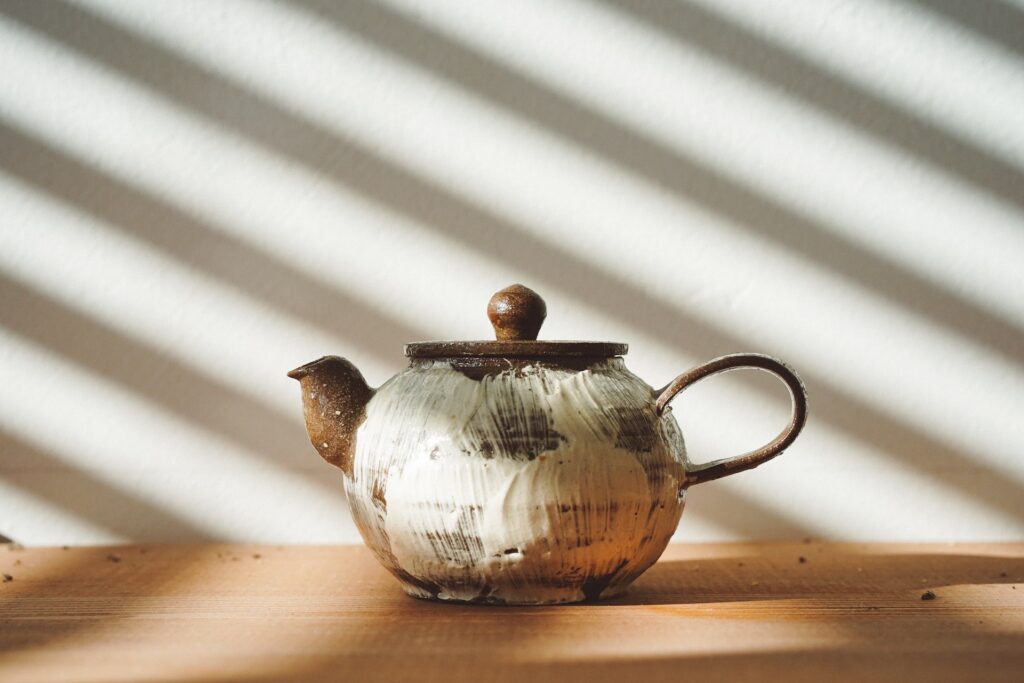
What You Must Know About Oolong Tea
Oolong tea comes from the Camellia sinensis plant, the exact plant used to produce green and black teas. Unlike those teas, though, oolong goes through a unique process that creates its distinctive flavor.
After the tea leaves are picked, they’re bruised and oxidized, then dried and rolled. This allows the leaves to partially oxidize before drying, giving oolong its characteristic aroma and taste. The rate of oxidation can differ, resulting in various flavors, from fruity and floral to nutty or woody.
Many people wonder, Is oolong tea acidic? The oxidation process produces acids, but oolong’s shorter oxidation means it retains more of the plant’s natural antioxidants that provide an alkaline effect. So while oolong is acidic, its pH is closer to neutral.
The Camellia Sinensis Plant: the Source of Oolong Tea
The source of all true teas, including oolong, is the Camellia sinensis plant. This evergreen shrub is native to Asia but is now grown around the world. The leaves are harvested and processed into these teas.
Oolong tea leaves go through a partial oxidation process, somewhere between green and black teas. The leaves are bruised to start oxidation, then heated to stop it partway through. This results in the oolong’s distinctive color and flavor. The oxidation level can vary, producing lighter or darker oolong teas.
Some popular oolong varieties are:
- Tie Guan Yin is A mild, floral oolong from China. It’s lightly oxidized, so it’s closer to green tea.
- Big Red Robe: A medium-oxidized Taiwanese oolong with notes of orchid and honey. (A happy medium between black and green tea.)
- Iron Goddess of Mercy is a Chinese oolong with a robust, nutty flavor from higher oxidation. (Closer to black tea)
The camellia sinensis plant contains antioxidants like EGCG that provide potential health benefits, especially for the heart and brain. Oolong tea has slightly lower amounts than green tea but more than black tea. Moderate oxidation may help oolong tea strike a balance between the two.
Drinking oolong tea in moderation—about 3-5 cups per day—is considered safe for most adults, and the caffeine provides an energizing lift. However, the tea’s acidity may irritate heartburn or acid reflux in some individuals. If you experience discomfort, try another herbal tea instead, preferably something “green tea-esque.”
How Oolong Tea Is Processed
Oolong tea is made in a special way, which gives it a unique taste. It comes from a plant called Camellia sinensis, and it takes four main steps to make it: withering, bruising, changing (also called oxidation), and drying.
Withering
Withering After the tea leaves are picked, they’re laid out flat to dry for about 8 to 24 hours. This helps the leaves lose some water and become bendy. During this step, the leaves start changing a little bit, which helps them get a more exciting taste.
Bruising
Next, the leaves get a little bit roughed up or torn, but gently, to let out some special oils and juices. This can be done by shaking the leaves or rolling them around. This step makes the changing or oxidation process happen quicker.
Oxidation
After you rough up the leaves a bit, you let them sit out in the open to change, or “oxidize.” This is how oolong tea gets its special taste. Depending on the type, the leaves might change from 15 to 70%.
If the leaves change a lot, the tea tastes darker and kind of like nuts. But if the leaves don’t change as much, the tea tastes greener and a bit like flowers.
The person making the tea watches this changing process closely and knows exactly when to stop it by drying out the leaves.
Drying
The last step is drying out these newly changed leaves. This can be done under the sun or using special machines. The dried leaves are then packed up to be sold as oolong tea or put into tea bags.
Oolong tea is semi-oxidized, producing tea that is not as green as green tea but not as dark as black tea.
The level of oxidation is what gives different oolong teas their range of flavors, from light and floral to bold and nutty.
The entire process, from picking to packaging, is designed to highlight the unique characteristics of oolong tea.
By controlling the level of oxidation, oolong tea can be produced with a wide variety of flavors and aromas to suit any taste. No wonder oolong tea is becoming such a popular choice for tea lovers looking to expand their palates.
Oolong Tea Flavors and Aromas
Oolong tea provides various flavors and aromas based on the specific type of oolong and how it’s processed. The flavors include floral, fruity, and nutty. Many oolong teas have aromas reminiscent of orchids, lilacs, peaches, and toasted nuts.
Floral and Fruity Notes
Some oolongs like Alishan and Dong Ding produce floral notes like orchid, lily, or rose. Others, like Four Seasons Spring and Iron Goddess of Mercy, offer aromas of peach, apricot, or mango. These fruity and floral oolongs tend to be on the lighter, greener end of the oolong spectrum. The aromas come through more prominently in the dry leaf but also translate to the flavor of the steeped tea.
Nutty and Toasty Notes
Darker, more oxidized oolongs like Da Hong Pao and Shui Xian are often described as nutty or toasty. You may detect aromas of toasted almonds, hazelnuts, or chestnuts. The nutty, malty flavors tend to be more robust in these oolongs. Some oolongs are also described as having notes of butter or cream due to their smooth, rich mouthfeel.
A Complex Blend
Many oolongs offer a complex blend of floral, fruity, and nutty notes. For example, a classic Tung Ting oolong may have aromas of orchid and peach in the dry leaf, a nutty, toasted flavor when steeped, and a lingering floral aftertaste. The ability to blend these diverse flavors and aroma compounds is what gives oolong tea its alluring complexity.
The specific flavors and aromas you experience will depend on factors like the cultivar, terroir, oxidation level, and roasting technique. Exploring the range of flavors across different oolong teas is part of the fun for any tea enthusiast. Oolong tea has something to offer for every taste, from light and floral to bold and nutty. The diversity and complexity are what give Oolong its appeal.
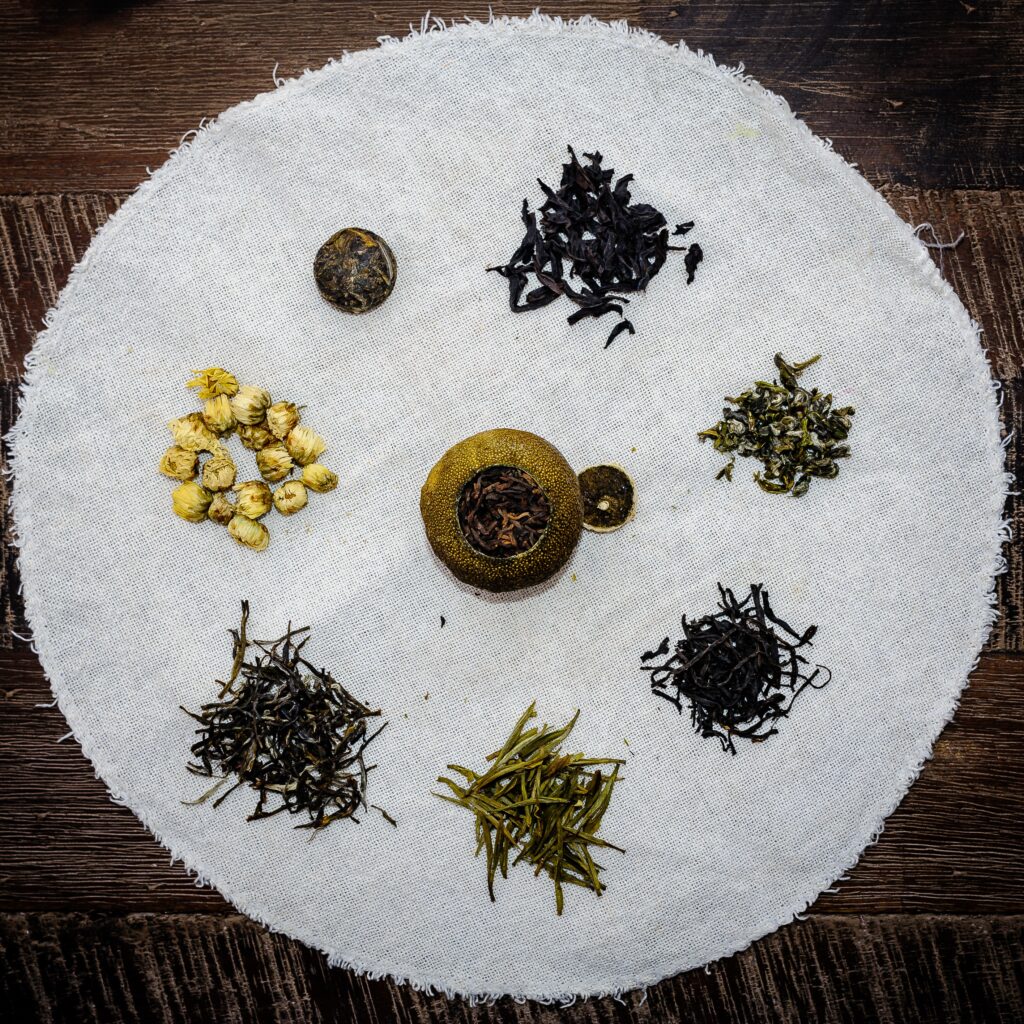
The Nutritional Benefits of Oolong Tea
Oolong tea offers some impressive nutritional benefits when consumed regularly. Here are a few of the main health perks you can gain from drinking this mildly acidic tea:
Improved Heart Health
Oolong tea is loaded with antioxidants that can help lower high blood pressure and high cholesterol levels, just like ginger tea, two factors that contribute to heart disease.
Antioxidants in oolong tea may help improve artery function and cut down on inflammation. Some studies show that drinking oolong tea regularly can reduce the possibility of heart problems by up to 50%!
Better Brain Function
The antioxidants in oolong tea can help prevent cognitive decline and may even boost brain function. Oolong tea contains theanine, an amino acid that can help improve alertness and attention while also having a calming effect. Some research shows oolong tea may help enhance memory, mental performance, and focus.
Healthier Skin and Bones
The antioxidants in oolong tea help fight free radicals that damage skin cells and cause signs of aging. Drinking oolong tea regularly may help prevent skin conditions like eczema and improve skin hydration and elasticity. Oolong tea also contains manganese, fluoride, and other minerals that are important for bone health and preventing conditions like osteoporosis.
Lower Risk of Diabetes
Oolong tea may help lower blood sugar levels and decrease insulin resistance, which can reduce the risk of developing type 2 diabetes. The antioxidant properties in oolong tea help stimulate insulin secretion and improve insulin sensitivity in the body.
Some studies show that drinking three or more cups of oolong tea per day can lower the risk of diabetes by up to 30%.
How Much Caffeine Is in Oolong Tea?
Oolong tea contains moderate amounts of caffeine compared to other tea types. Oolong tea also has a moderate level of caffeine compared to other teas. A typical 8-ounce serving of oolong tea has around 55 milligrams of caffeine, compared to 64 milligrams in the same amount of green tea and 75 milligrams in black tea. The lower caffeine content can help reduce stomach irritation and acid reflux in some people.
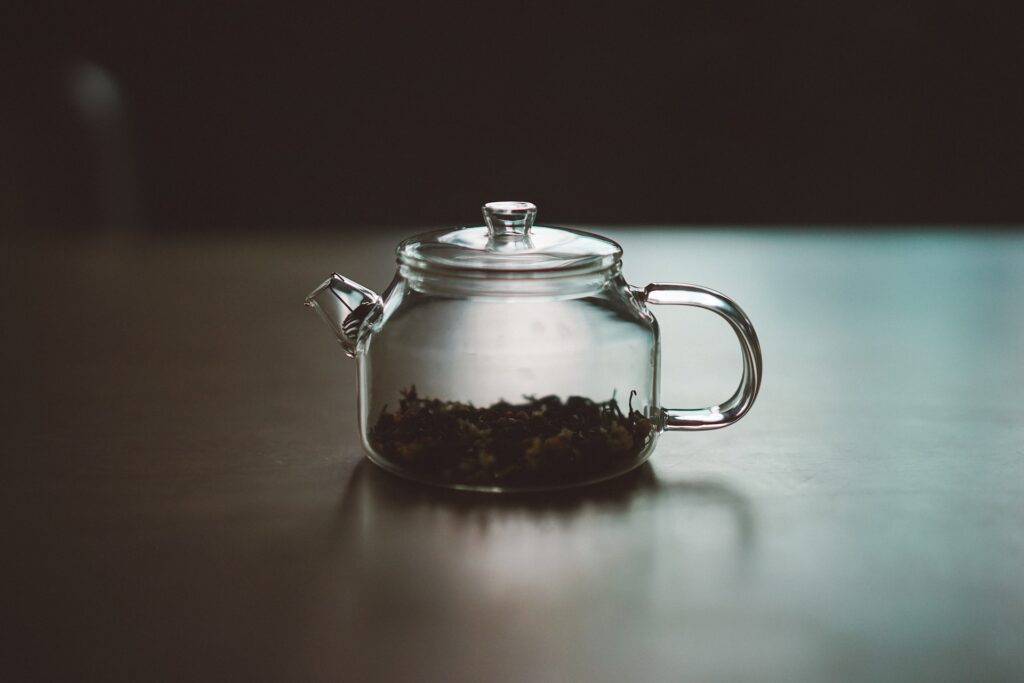
Guides for Brewing Oolong Tea
The specific amount can differ as per the specific oolong tea and how it’s prepared. In general, you can expect oolong tea to have the following:
About 30 to 50mg of Caffeine Per 8-Ounce Serving
This is less than a typical cup of coffee, which contains 95–200 mg, but more than most herbal teas, which are caffeine-free.
Oolong tea leaves are partially oxidized, so they retain more caffeine than green tea leaves but less than black tea leaves.
The longer the leaves are oxidized and the longer the tea steeps, the more caffeine will be released. So a darker oolong tea steeped for 3-5 minutes will have more caffeine than a lighter oolong steeped for 1-2 minutes.
Enough to Provide an Energizing Effect But Usually Won’t Cause Jitteriness
The moderate amount of caffeine in oolong tea can help you feel alert and focused. However, it’s unlikely to produce the jittery, anxious feeling that can result from drinking too much coffee or black tea.
The caffeine level in oolong tea tends to be ideal for most adults but may still be too much for some. If you’re sensitive to caffeine, try a greener oolong tea with a shorter steeping time or mix in some decaf oolong tea bags.
Variable Based on Other Factors
Tea leaf size: smaller leaves have more surface area, so they release more caffeine. Oolong teas with smaller rolled leaves tend to be higher in caffeine.
Water temperature: hotter water helps the tea leaves release more caffeine. Colder brewing methods, like cold-brewed oolong tea, will produce less caffeine.
Steeping time: the longer the tea leaves steep in hot water, the more caffeine can infuse into the tea. A quick 30-second steep will yield less caffeine than a 3-minute steep.
Oolong Tea vs Other Types of Tea
So because you are not a scientist with tools to test pH, it’s prudent to have methods to test the pH of what you consume. This test is quite simple: sourness usually equals acidity, aka the more sour a thing is, the more acidic it probably is!
Here’s the scoop on different types of tea and how sour they can be. So, oolong tea is a bit like sour candy, but not too much. It’s a bit more sour than other teas, but not as much as black tea or green tea. It’s in the middle. Black tea and green tea are like eating a sour Warhead, while teas like chamomile or peppermint are like a sweet lollipop, not sour at all.
Now, black tea is like the boss of sour teas. Why? Because the leaves of the tea plant go through a process called oxidation, which makes them super flavorful but also makes the tea more sour, this change creates something called tannins, which are responsible for that bold flavor and sourness.
Green tea is less processed, so it retains more of the natural antioxidants in the Camellia sinensis plant’s leaves. However, it is still moderately acidic. The acidity comes from the plant leaves themselves, not the processing.
Herbal teas come from spices, herbs, and plants other than the Camellia sinensis tea plant. Many herbal teas like chamomile, peppermint, ginger, and lemon tea have little to no acidity and can even be alkaline.
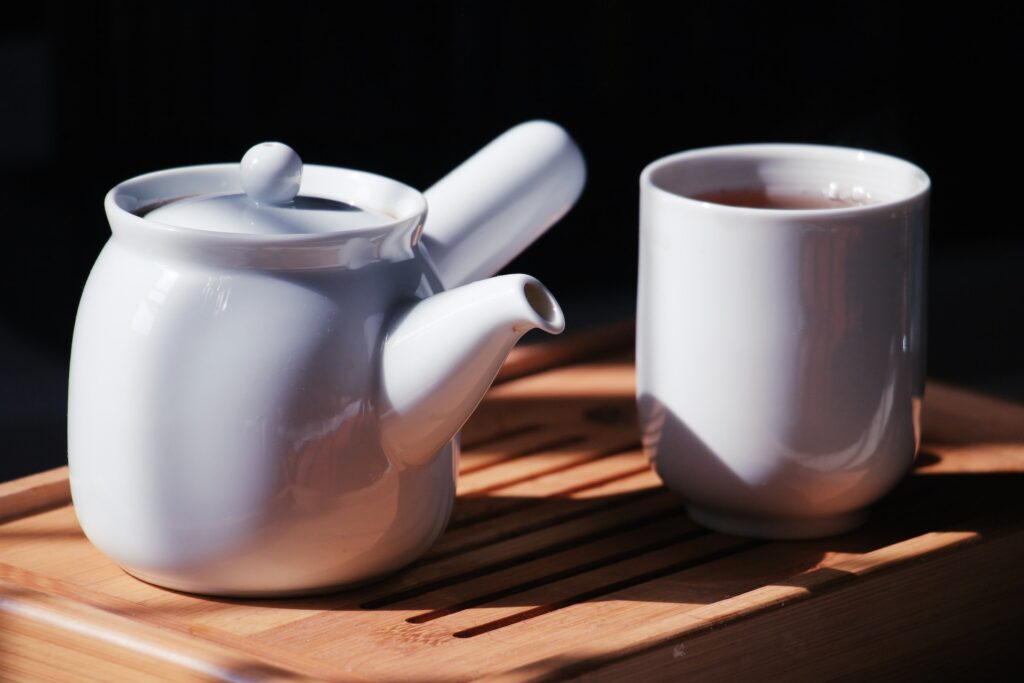
Oolong Tea: Acidic or Alkaline?
Oolong tea is like the middle child of the tea world when we talk about how sour or tangy it is. It’s not like black tea, and you might ask, “Is green tea sour?” Well, it’s somewhat sour. But oolong tea? It’s chill and more balanced. The way we make oolong tea, we cut down on the stuff that gives you energy and the stuff that makes some teas sour.
Processing Matters
What makes a tea sour? It’s all about how much it “rusts.” Just like a bike left in the rain! With oolong tea, we only let the leaves “rust” a little. We bash them up a bit and let them breathe in some oxygen; then, we heat them up to stop the “rusting.” Cool, right?
This results in a tea that retains some of the fresh, vegetal notes of a green tea but also develops the malty, nutty flavors of a black tea. The shorter oxidation time means fewer catechins break down into acidic compounds like tannins.
To brew a perfect cup of oolong tea, follow these tips:
Use High-Quality Loose-Leaf Tea
Loose-leaf oolong tea will give you a much better flavor than tea bags. Look for whole tea leaves that still have their natural oils. The leaves should look twisted and curled, not crushed. High-quality oolong tea leaves can be reinfused 2-3 times.
Pay Attention to the Water Temperature
Oolong tea leaves are more delicate than black tea leaves, so use water between 185 and 205 degrees Fahrenheit or 85 and 96 degrees Celsius. Very hot water can scorch the leaves and produce a bitter taste. For most oolongs, 195 degrees F is a good place to start.
Use the Proper Amount of Tea
For every 8-ounce cup of tea, use about 2 to 3 grams of loose-leaf oolong tea. So for a typical 4-cup recipe, use 8 to 12 grams of tea leaves. Adjust the amount up or down to your taste. More tea leaves will produce a stronger, darker tea.
Steep the Tea for the Right Time
A good rule of thumb for oolong tea is to steep the leaves for 2 to 5 minutes. Lighter oolongs at the lower end of the time range and darker oolongs at the higher end. Start with 3 minutes, and then taste the tea. Steep longer for a stronger flavor or shorter for a lighter flavor.
Strain and Serve
Once the steeping is done for the time needed, strain out the tea leaves. You can use a mesh strainer or tea infuser. Serve and enjoy your oolong tea. The tea leaves can typically be reinfused 2-3 times before losing most of their flavor.
Conclusion
Alright, here’s the scoop on oolong tea and its tanginess. Even though oolong tea has a bit of acid in it, especially when the tea leaves chill out for a long time, it’s usually not too tangy.
If you put it up against chamomile tea, oolong tea usually won’t bug your tummy or give you heartburn. The awesome part is that oolong tea is full of cool stuff that’s good for you when you don’t drink too much of it. It’s got antioxidants, and it can even make your brain work better!
So, the next time you’re in the mood for a cozy, warm mug of tea, give oolong a shot; your belly and your taste buds will be happy to have it.
